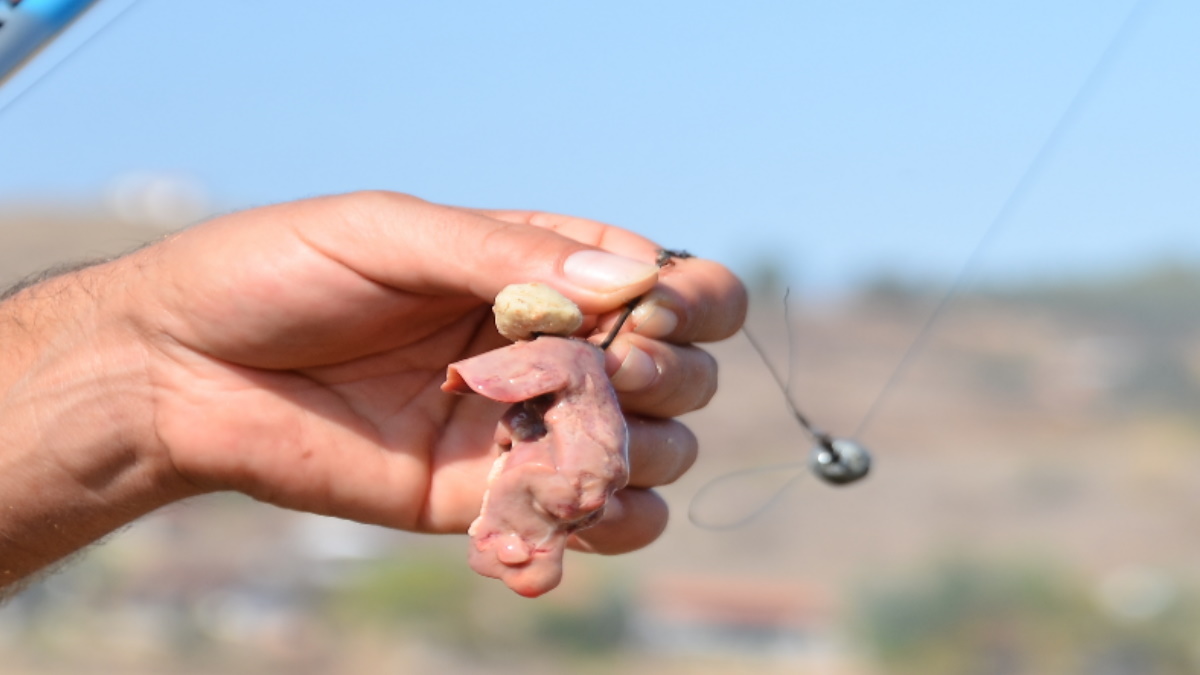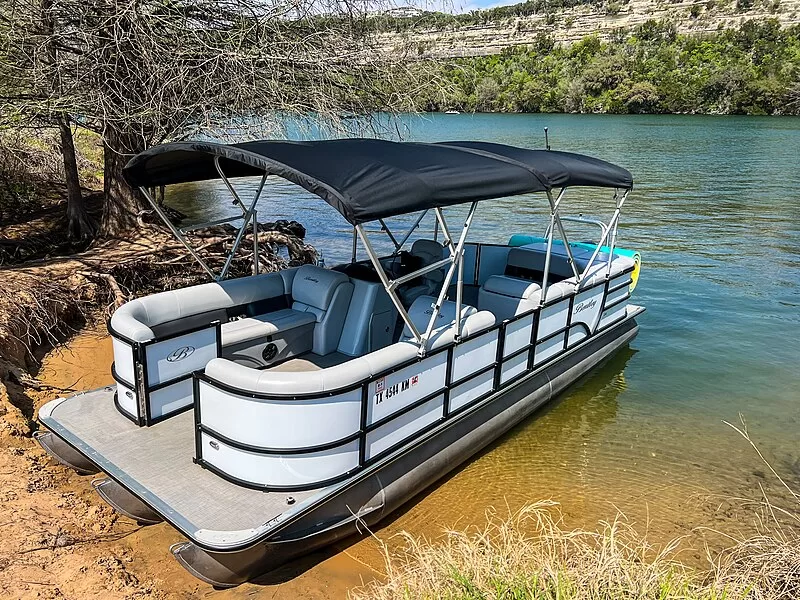A Fisherman’s Guide to Types of Bait
Here is what I know — which might be viewed by some as not knowing very much or maybe sharing too much of the obvious — surrounding types of bait used on Lake Wallenpaupack.
There is a deep hatred by some for those guys and gals that run bait deep in our lake. For me personally, I think you fish how you want and stick to what you know. The argument is that when you pull big fish up from the depths of the lake that they are incapable of making it back down to where they came from due to something called barotrauma (pressure shock).
This isn’t guaranteed to happen, but fish do often times have trouble adjusting when released too quickly. Another common issue is that they fight too hard and too long… and that even after we provide what we believe is a successful release some fish honestly don’t make it. Again, it isn’t natural for a fish to be caught so there is a risk that no matter how you approach catch and release, the fish might not make it.
This article is meant to discuss some things that you probably already thought about, considered, or have even tried. I’m not going to argue about the rights or wrongs of what people do but let’s not try to introduce species that don’t belong in our lake into the lake environment. These species are labeled by PA Fish & Boat as AIS – Aquatic Invasive Species or ANS – Aquatic Nuisance Species. Some of these species include the Snakehead, Asian Carp, Zebra Mussel, Round Goby and even the Red Eared Slider (turtle).
Aquatic invasive species (AIS) (also referred to a aquatic nuisance species or ANS) are aquatic animals and plants that have been introduced into waterways in which they do not live naturally. They have harmful effects on the natural resources in these ecosystems and the human uses of these resources.
Pennsylvania Fish & Boat Commission
I’m not an expert, but I do see the harm in using things that aren’t natural to the area. We have people coming to our Lake from not only PA, NJ, DE, and NY but our guests may be from places even further away. My point is that if it’s in the feeder streams and in the lake already, chances are it’s okay to use – otherwise, even dead bait has a chance to create a problem for our ecosystem. The video below from PA Sea Grant talks more about what makes these species invasive and the potential impacts they can have on the environment.
Bait Options at Lake Wallenpaupack
These are things that I’ve heard in the years I’ve been on the lake:
- Nightcrawlers: an earthworm, in particular one that comes to the surface at night and is collected for use as fishing bait. Believe it or not, I’ve witnessed and heard of stories from people that have caught Stripers in Lake Wallenpaupack on this type of bait. It’s a commonly used live bait that has offers any skill level the ability to catch a fish. Best part about a nightcrawler? They are usually found in vending machines and easy to get a hold of.
- Earthworms: a burrowing annelid worm that lives in the soil. Earthworms play an important role in aerating and draining the soil and in burying organic matter. Another commonly utilized bait for any body of water. Best for catching perch, bluegill and other smaller types species of fish.
- Mealworms: Mealworms are the larval form of the mealworm beetle, Tenebrio molitor, a species of darkling beetle. Like all holometabolic insects, they go through four life stages: egg, larva, pupa, and adult. Larvae typically measure about 2.5 cm or more, whereas adults are generally between 1.25 and 1.8 cm in length. Add a piece of corn to cover the hook and you have yourself a nice little setup for just about any kind of small to large fish. From bass, to panfish and even larger species like carp.
- Waxworms: AKA “Waxies” are the caterpillar larvae of wax moths, which belong to the family Pyralidae. Two closely related species are commercially bred – the lesser wax moth and the greater wax moth. They belong to the tribe Galleriini in the snout moth subfamily Galleriinae. I use these quite a bit on my ice-fishing jigs for anything from bass, to crappie or bluegills.
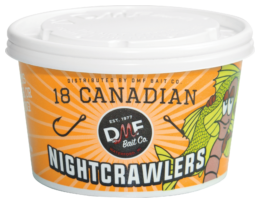


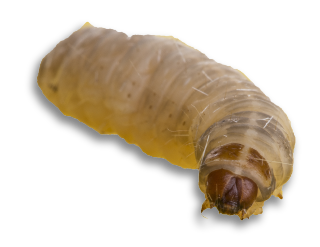
- American Eels: Elongated, snakelike body with a broad, depressed snout. Lower jaw extends beyond the upper jaw, and eyes are placed well forward on the head. The mouth is large and slightly oblique, with the gape extending to the posterior margin of the eye. Now listen, I said I wasn’t going to say it’s right or wrong, I’m only sharing what I’ve heard. Last I checked, the watershed doesn’t list American Eels as a species in our lake, so take note.
- Chicken Liver: the liver of chicken, considered as food. Now, I’ve personally tried this one and it is dirty, foul smelling and requires some bait thread to hold help hold the bait on the hook while the fish are pulling away at it. It’s good for Striper, I guess… and most definitely a catfish or two, or three.
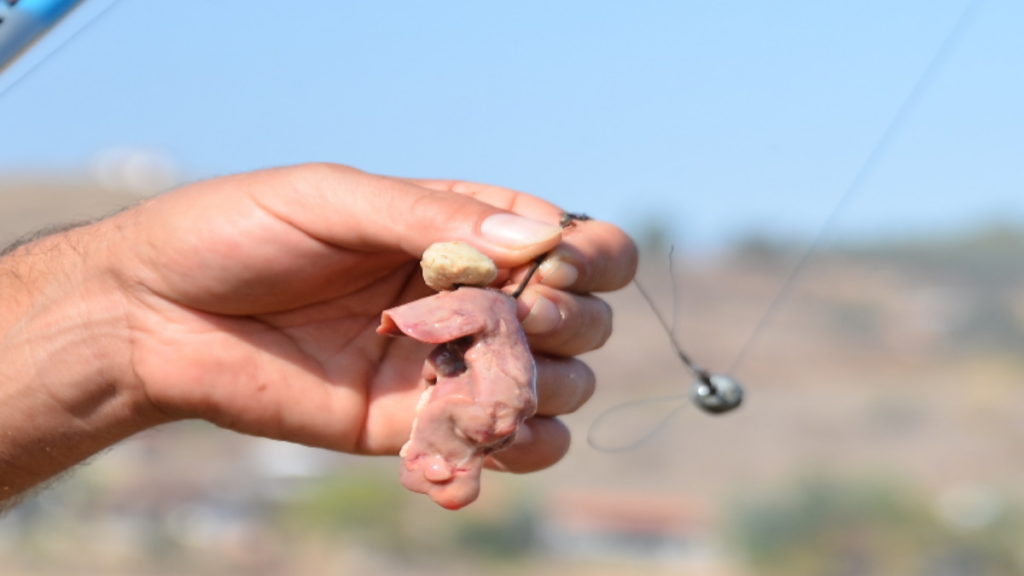
- Chuck Stew: Typically comes from the large shoulder of a cow, more commonly called “chuck”. But roast, top and bottom round, tips, and even steak can be used as stew meat. Laugh if you want but this bait, especially when worked off the bottom of the lake, can produce some nice catfish. Once the blood drains out of the piece with no bite, switch it up about every 15 minutes.
- Rainbow Trout: is a trout and species of salmonid native to cold-water tributaries of the Pacific Ocean in Asia and North America. Seems odd but the do work and the depending on the size 5” – 9” you just might catch a gigantic monster fish that we all know live down there in the deeper regions of the lake. How you fish these is a different discussion. Just make sure you keep your receipt when purchasing these as the PA Fish and Game guys may ask for it!
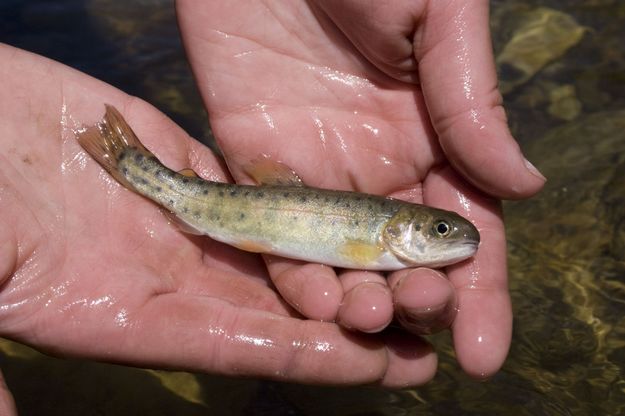
- Alewife: The Alewife is an anadromous Herring in its natural range, living its adult life in salt water and swimming into freshwater tributaries to spawn. With an enormous population in Lake Wallenpaupack, these bait fish catch a wide range of species. Pretty much anything in the lake will eat these. I heard a rumor that some guys catch them, blend them up and use the oil to rub on their soft & hard baits. The trick to Alewife bait fishing is keeping them alive long enough to catch a fish. They like circular / oval tanks with lots of fresh cold water. Check out our article on Keeping Alewife Alive for some more tips and tricks!
- Herring: a silvery fish that is most abundant in coastal waters and is of great commercial importance as a food fish in many parts of the world. Most Herring family species are ocean-dwelling or anadromous, living in salt water as adults, but returning to fresh water to spawn, and spending the early part of their lives in fresh water. Other Herring family members are strictly freshwater fish. Here is the deal with this one, some of the local bait shops carry herring or freshwater version of the herring and for as much as they say they are Alewife, they are different. The bait shops use a much heartier version of the Alewife that look, feel and smell different than the Alewife that live in Lake Wallenpaupack.

- Bluegill / Pumpkinseed: A panfish, also spelled pan-fish or pan fish, is an edible game fish that usually does not outgrow the size of a frying pan. The term is also commonly used by anglers to refer to any small catch that will fit in a pan but is large enough to be legal. I’ve seen big ole’ large mouth bass chase a hooked bluegill for a couple minutes before it get’s devoured. Lot’s of fish eat panfish – however, our Lake Wallenpaupack panfish population is heading a bit south. It’s not from overfishing or boating, but the population is on the decline and there are several explanations as to why.
- Perch: As opposed to the white perch, an invasive species – the yellow perch, commonly referred to as perch, striped perch, American perch, American river perch or preacher is a freshwater perciform fish native to much of North America. One night at about midnight I watched a monster catfish eating a perch that was still alive… the catfish was at the top on a coldish type evening and it was attempting to swallow headfirst a very alive and fighting perch. In the end, we all know who won that fight and let me tell you that catfish was all of three feet long!
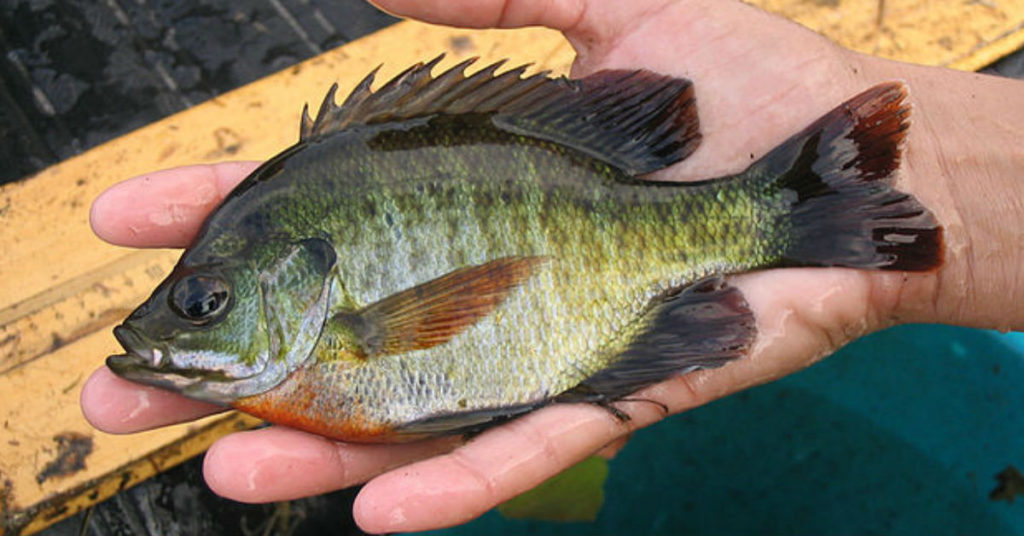
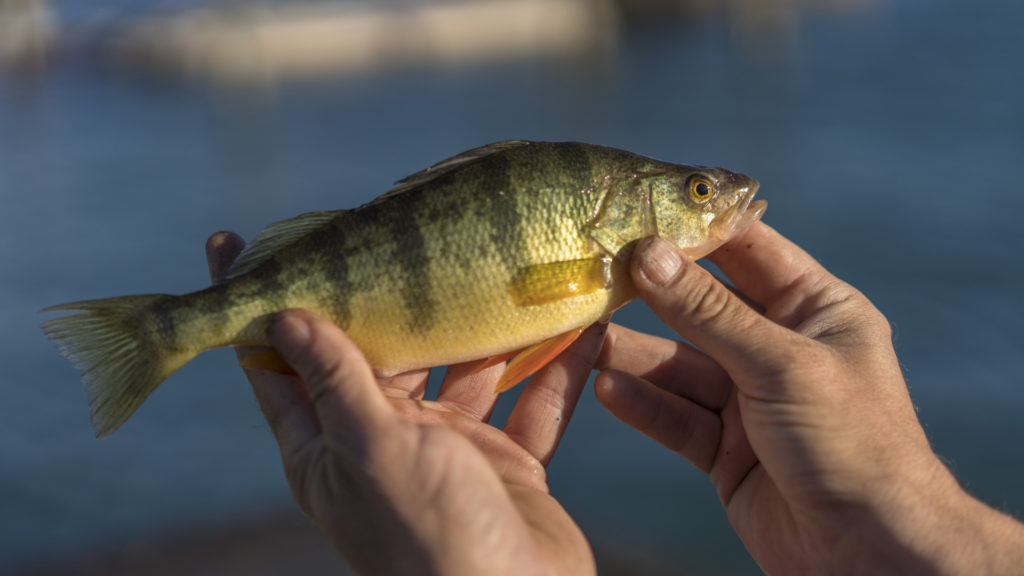
- Leeches: An aquatic or terrestrial annelid worm with suckers at both ends. Many species are bloodsucking parasites, especially of vertebrates, and others are predators. There used to be some mom-and-pop bait shops in Western Pennsylvania that grew their own leeches in a pond and sold them, but those places are few these days. Most of the leeches used for bait in this area come from Michigan, Wisconsin and Minnesota. They are collected for wholesalers by leech trappers.
- Golden Shiners: The golden shiner is a cyprinid fish native to eastern North America. It is the sole member of its genus. Much used as a bait fish, it is probably the most widely pond-cultured fish in the United States. Bet you didn’t hear about this one, or maybe you did? The color variation makes this fish a good bait for catching fish deeper in the lake. Good luck finding them, I’ve heard rumors that some ponds around the lake have a ton of these.
- Fathead Minnow: The fathead minnow is a species of temperate freshwater fish belonging to the genus Pimephales of the cyprinid family. The natural geographic range extends throughout much of North America, from central Canada south along the Rockies to Texas, and east to Virginia and the Northeastern United States. Pretty much the average bait minnow you’ll find in 99% of bait shops around the lake. These work great on smallies, perch, chain pickerel, largemouth, etc.

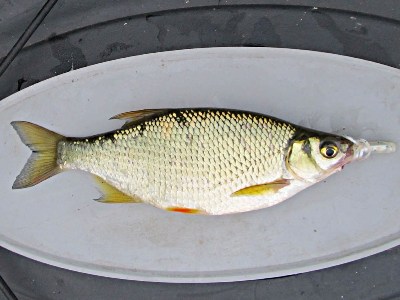
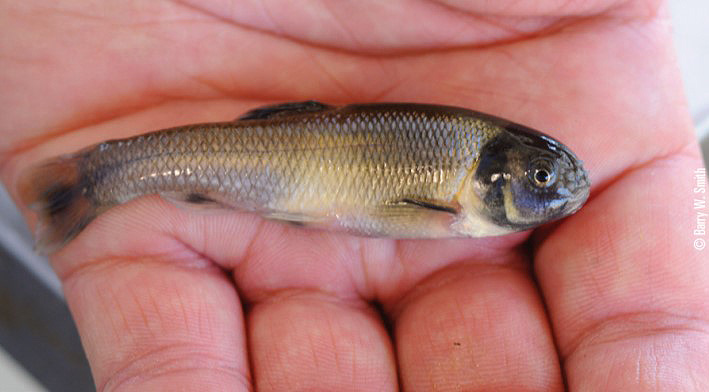
- Dough Balls: A type of bait made from a paste of flour or moistened bread and various other ingredients, formed into a small ball and usually boiled or chilled. Form the dough into pieces the size and shape of golf balls and drop into boiling water. Allow to cook about 3 minutes. This hardens the pieces, so they’ll stay on your hook better. Use a slotted spoon to remove the dough balls from the water. I’ve heard one small trick to catch monster carp on dough balls is to add in a cranberry scent or to soak the dough in flavored Jello mix.
- Frogs: I’m not a 100% certain but I believe there are like 17 species of frogs you could potentially use in Lake Wallenpaupack. It is entirely legal to use frogs as bait, what you can expect to catch is anything from panfish to large bass. I haven’t heard of anyone catching a pike on a frog but I’m sure it’s not impossible.

- Lampreys: an ancient extant lineage of jawless fish of the order Petromyzontiformes, placed in the superclass Cyclostomata. The adult lamprey may be characterized by a toothed, funnel-like sucking mouth. First of all, my notes might say Lampreys but you won’t ever catch me fishing with these as bait, they simply freak me out. My guess is that you want to fish for pike with these nasty creatures.
- Suckers: The Catostomidae are the suckers of the order Cypriniformes, with about 78 species in this family of freshwater fishes. The Catostomidae are almost exclusively native to North America. The only exceptions are Catostomus catostomus, found in both North America and Russia, and Myxocyprinus asiaticus found only in China. Definitely in the river and definitely an amazing live bait for Smalls, Pike & even Muskies if you can find one.
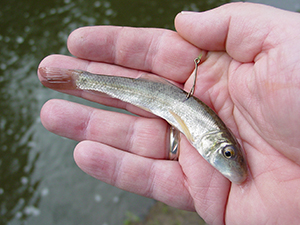
- Chubs (Creek Chubs): Squalius cephalus is a European species of freshwater fish in the carp family Cyprinidae. It frequents both slow and moderate rivers, as well as canals and still waters of various kinds. This species is referred to as the common chub, European chub, or simply chub. Some folks will eat chubs instead of using them for bait, rumor is that they are great smoked. Again, mostly found in the rivers leading to the lake.
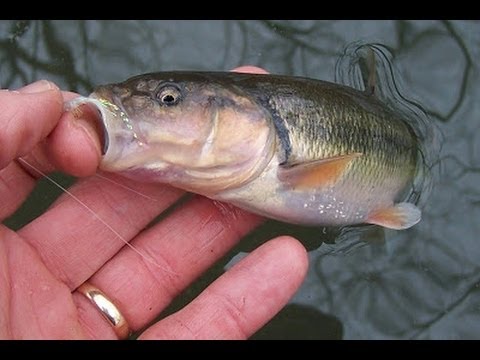
- Crayfish: Crayfish are freshwater crustaceans resembling small lobsters. In some parts of the United States, they are also known as crawfish, craydids, crawdaddies, crawdads, freshwater lobsters, mountain lobsters, rock lobsters, mudbugs, or yabbies’. I’ll tell you this, after flipping rocks all day, you shouldn’t have any problem catching some big fat smallies on a bucket of crawfish. When I used to fish these on the river, I would float them with a bobber in some faster moving parts, it’s a blast if you haven’t tried it.

- Goldfish: The goldfish is a freshwater fish in the family Cyprinidae of order Cypriniformes. It is commonly kept as a pet in indoor aquariums, and is one of the most popular aquarium fish. Native to East Asia, the goldfish is a relatively small member of the carp family. This one is definitely illegal but that doesn’t mean I haven’t heard of a few fellas trying it out at night. Again, I don’t support any illegal activity or what I deem to be detrimental to the ecosystem but you have all types of people out there in the world.
- Grasshoppers: Grasshoppers are a group of insects belonging to the suborder Caelifera. They are among what is probably the most ancient living group of chewing herbivorous insects, dating back to the early Triassic around 250 million years ago. Among the meadow katydids found across Pennsylvania are the common, gladiator, lesser, short-winged, slender, straight-lanced and woodland meadow katydids, and the lesser pine katydid. Most grasshoppers do not make sounds and many of those that do are difficult for the human ear to detect. Have fun catching Trout, Smallmouth Bass and other predatory species of fish that watch the top of the water for their next meal.
I’m sure there are a few hundred other types of bait you’ve utilized, including the occasional hotdog, or piece of stale bread. You wouldn’t be wrong for trying. You honestly don’t know what might land you that next prize fish.
Regardless of what bait you use and where you use it, remember the most important thing; if you aren’t eating your fish please practice responsible catch & release efforts. We have several articles about the alewife challenges and mortality rates of fish, don’t hesitate to check those out.
Good luck finding out what works best for you and please remember to follow the guidelines that the PA Fish & Boat Commission provide when it comes to live bait and bait fishing regulations! #TightLines
Trending Articles
[post_grid id=’8577′]
